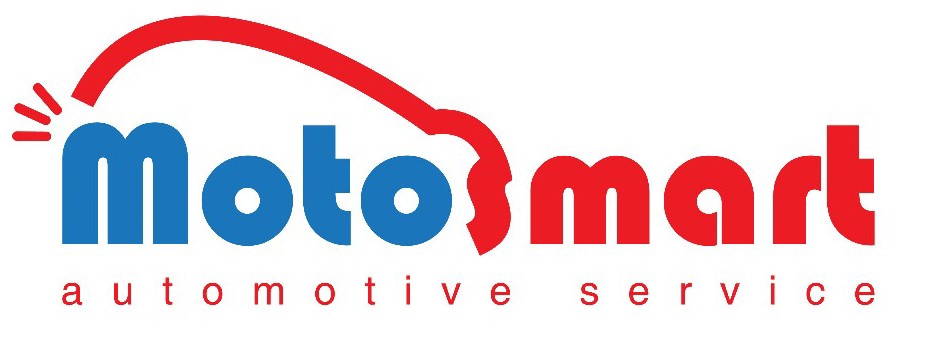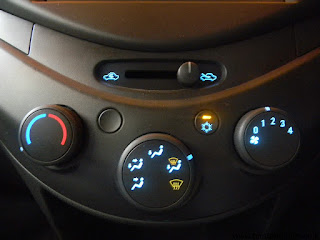It’s true – car maintenance can sometimes get in the way of
life. However, making sure that your vehicle is properly maintained when it
needs to be will help to ensure that you don’t spend precious time stuck on the
side of the road when you could be spending it on things you cherish. Being
aware of these 12 common car maintenance mistakes will help you in the long
run.
Ignoring
check engine light
It can be easy to ignore the Check Engine
light. The light comes on and your car seems to be operating as it normally
would and you might figure, “Well, everything seems fine, I’ll take care of it
soon.” But other things come up, it gets put off, and one day your car could
breakdown. As difficult as it might be to find the time to have your vehicle
seen by a mechanic when that dashboard light first comes on, it really is best
to have it seen as soon as possible because the longer you wait, the higher the
costs could be for repairs. In other words, a little time spent having it fixed
right away could save you a lot of money in the long run.
Not checking your tyre pressure
It is a
common mistake to forget to check the air pressure in one’s tyres because, from
the looks of it, the tyres are properly inflated. Looks can be deceiving. Even
when tyres appear to be properly inflated, they could be low on air. While the
tyres may not blow out, low tyre pressure could lead to poor fuel economy, so
your wallet could still be affected. It is also easy for tyres to lose air
pressure – as easy as running over a pothole. The weather outside has a big
effect on your tyre pressure. Tyres lose 1 to 2 lbs. of air pressure for every
10 degrees the temperature drops outside. Therefore, it is best to check your
tyre pressure regularly because you never know when it might be low. After all,
the last thing you want is a flat tyre and/or poor gas mileage.
Ignoring your TPMS light
If your Tyre
Pressure Monitoring System light activates, check your tyre pressure. Your TPMS
light serves as a warning system informing you when one or more of your tyres
are deflated beyond what is considered safe by your vehicle’s manufacturer. If
this light comes on while you are driving, pull over somewhere safe, preferably
your closest open gas station, and verify whether your tyre is losing air. If
applicable, add air. Occasionally your TPMS sensor may require replacement. If
your TPMS is indicating a loss of air pressure, but when you check your tyre,
all is well, consider TMPS sensor replacement. In addition to the
aforementioned benefits of checking your tyre pressure, balanced tyres promote
even tyre wear, resulting in a longer tyre life and better fuel economy.
Skipping oil changes
Motor oil and
car engine technology has advanced so much over the years that, depending on
the recommendations of your vehicle’s manufacturers, it may no longer be
necessary to get an oil change every 3,000 miles – the average oil change
interval is around 7,800 miles for today’s cars. This is great news because it
means less time and money spent taking your vehicle for an oil change. However,
this does not mean that oil changes can be skipped. Your vehicle’s engine needs
motor oil to operate properly and without it, the engine seizes up and dies. In
order for motor oil to keep your engine running, it can’t be too old. Case in
point: if motor oil is left in an engine for too long, the oil begins to break
down, which can lead to nasty deposits of sludge in your engine. Instead of
lubricating and cooling the engine parts, the oil sludge can damage the parts,
which is something you want to avoid at all costs. Getting regular oil changes
will help to ensure a long engine life.
Neglecting fluid checks
It is a common misconception that motor
oil is the only fluid in the car that needs to be checked and changed. It’s
true that motor oil is one of the more critical fluids in your vehicle but
there are many other fluids in the car that should be checked, exchanged,
and/or topped off. Brake fluid, transmission fluid, engine coolant, and power
steering fluid should all be checked and serviced as recommended by your
vehicle’s manufacturer. Doing this helps to avoid leaks and keep your vehicle
operating properly.
Still driving when the engine is overheating
Even
automotive experts have admitted to being guilty of this. They also say that
this is not the wisest thing to do. An engine, by nature, gets extremely hot
when it runs, requiring a cooling system to avoid overheating. When that system
fails (and it can happen to anyone), the vehicle needs to be stopped
immediately. In this situation, the best idea is to turn the car off and call
for a tow.
Not using filters as recommended
Filters need to
be as clean as possible in order to work optimally. Clean filters keep dirt
particles and other contaminants from entering your vehicle’s fuel, engine or
air conditioning systems. Dirty air filters can lead to a host of issues
ranging from causing poor gas mileage to making your engine seize or wearing
out system components. Have your filters changed as recommended by your
vehicle’s manufacturer, and you’ll be glad you did.
Not inspecting the brakes
It is easy to
ignore that squealing noise that comes from worn-down brakes. It is easy to
convince yourself that the noise is coming from another car or that there is
time to spare before you check. The truth is that the brakes are one of the
most important components of your car. If they are worn down or are not working
properly, your vehicle becomes unsafe for you and your passengers. So if you
hear a squealing or grinding noise when you brake, have your brake system
evaluated as soon as possible.
Not rotating tyres/neglecting to get a wheel
alignment
This can be a
simple thing to overlook because you can drive for quite a while without
getting an alignment or rotating your tyres. Although it might seem like
everything is fine, having misaligned wheels can result in real issues. There
is only one way to be positive that your tyres are properly aligned and that is
to have your vehicle’s alignment checked. If a wheel alignment is recommended,
it is in your best interest to have it performed. As for tyre rotation, most
manufacturers recommend that tyres be rotated every 5,000 to 10,000 miles; but
check your owner’s manual to make sure.
Servicing your own vehicle without the proper
know-how
The cool
thing about cars these days is that they are well computerised. There is a
computer that monitors various sensors inside the car and uses those sensors to
regulate things like idle speed, spark plugs, and fuel injectors, to name a
few. If something goes wrong, the computer can sense it and will activate your
vehicle’s Check Engine light to alert you to the fact that there is an issue.
Since your vehicle is computerised (i.e. complicated), it can be tremendously
difficult to fix something yourself if you don’t have the proper tools,
knowledge, and diagnostic equipment. As much as it might cost to have a
professional technician take a look at your car, you can rest assured that your
vehicle will get serviced and/or repaired correctly.
Not changing your windshield wipers
Windshield
wipers degrade over time. They chatter, tear and, as a result, leave a streaky
wipe behind. The trick is changing your wipers as soon as they don’t clear the
windshield well. As they age, wiper blades will leave behind streaks,
indicating that it is time to change them. Rain, dew and other precipitation
can severely cut down on your ability to see the road and other vehicles
clearly so changing your wipers when they wear out is very important. Take the
wiper blade challenge to determine whether it’s time to replace your windshield
wipers.
Using home glass cleaner to clean your rear
windshield
This is a big
no-no. Most home glass cleaners use ammonia as a chief cleaning agent. Over
time, ammonia will break down the heating elements in your rear windshield. The
thin red lines you see are actually small wires designed to bring heat to your
windshield to assist with defrosting. It is much safer to use window cleaner
designed for automotive glass
Written by: 'Kunle Shonaike























